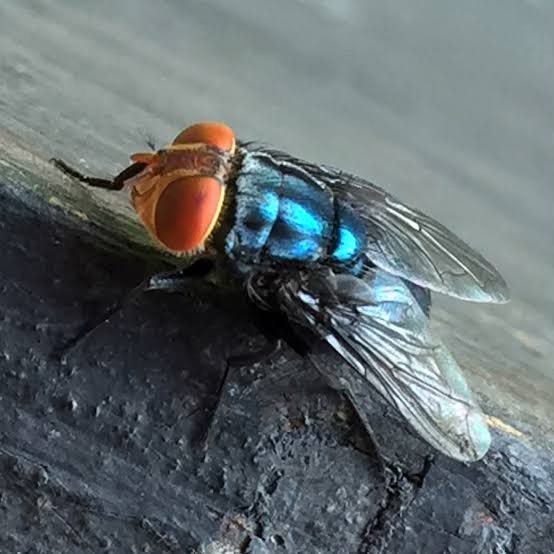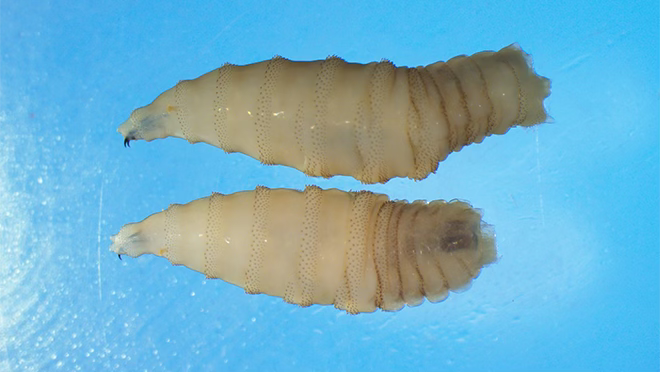Myth vs. Reality: Is the Screwworm a Biological Weapon?
Unmasking the Screwworm: A deep dive into the parasite moving north—and the real reason it’s threatening U.S. agriculture.
When headlines warned that the “man-eating screwworm is moving north,” online speculation exploded. Some asked: “Is this parasite being used as a biological weapon?” It sounds like something out of science fiction—flesh-eating flies destroying livestock and creeping toward U.S. borders. But what does the historical and scientific record actually show? It’s interesting.

The New World screwworm (Cochliomyia hominivorax) is a naturally occurring parasitic fly native to the Americas. Unlike common houseflies that lay their eggs in decaying matter, the screwworm targets open wounds on live, warm-blooded animals. Once the eggs hatch, the larvae begin feeding on living flesh, causing a horrific condition known as myiasis. If left untreated, this condition can result in the death of livestock, wildlife, or even humans. The biology of the screwworm is chilling, but its presence in North America is not new—nor is it the result of deliberate release. (https://www.aphis.usda.gov/aphis/newsroom/stakeholder-info/sa_by_date/sa-2022/screwworm-barrier)

Yanasa News is reader-supported. To receive new posts and support our work, consider becoming a free or paid subscriber.
The traits of the screwworm are understandably alarming. It can infest any warm-blooded host, from cattle and deer to domestic pets and humans. A single female screwworm fly is capable of laying up to 3,000 eggs in her lifetime, and the adults can travel over 100 miles in search of suitable hosts. In May 2025, the U.S. Department of Agriculture confirmed that over 950 new cases were detected in southern Mexico, only about 700 miles from the Texas border. Given this proximity, the sudden rise in speculation is no surprise and shouldn’t be ignored. “Officially,” there is no evidence—scientific or military—that screwworms have ever been used or developed as biological weapons. (https://www.wired.com/story/a-parasite-that-eats-cattle-alive-is-creeping-north-toward-the-us/)
That said, history does contain examples of insect-based biological warfare research, particularly during the 20th century. The United States military conducted entomological warfare experiments from the 1940s to the 1970s, primarily through the U.S. Army Biological Warfare Laboratories at Fort Detrick, Maryland. These experiments included tests like Operation Big Itch, which involved the release of uninfected fleas to study dispersal patterns, with the intent of developing a potential vector for bubonic plague. Similarly, Operations Drop Kick and May Day tested the viability of mosquitoes, such as Aedes aegypti, for spreading diseases like dengue and yellow fever. Ticks, including Ixodes scapularis and Dermacentor andersoni, were also studied as vectors for illnesses like Rocky Mountain spotted fever and Q fever, though there is no “conclusive evidence” they were ever deployed in combat scenarios. (https://en.wikipedia.org/wiki/Operation_Big_Itch)
It’s note worthy to mention here Lime Disease and Alpha-gal Syndrome. Certainly a couple of eyebrow raisers. Look into Yanasa TV’s report on Alpha-gal Syndrome for more information.
Some rather convincing theories allege that Lyme disease originated from a Cold War-era biological experiment gone awry, possibly linked to research conducted at Plum Island Animal Disease Center or Fort Detrick. These claims persist due to some oddly coincidental geographic coincidences—Lyme, Connecticut is located near Plum Island—the center for secrecy surrounding early research into tick-borne diseases. However, the “prevailing scientific consensus” would like to claim that Lyme disease is a naturally occurring zoonotic infection. Similar “scientific consensus claims” were made about COVID-19 and later rebuked. Regardless of it’s origins, the spread has been by ecological factors such as rising deer populations, changing land use, and of course, no article would be complete with out mentioning warming climates. (https://www.cdc.gov/lyme/index.html)
The goals of such entomological warfare programs were varied. Some sought to develop vectors that could carry and spread pathogens among enemy populations, effectively turning insects into delivery systems for diseases such as tularemia, yellow fever, and plague. Other efforts focused on agricultural sabotage, using insect pests to destroy enemy food supplies and undermine economic stability. In some cases, uninfected insects were considered as harassment tools to distract or debilitate enemy troops. These strategies may sound absurd by today’s standards, but they were seriously researched during the Cold War era. (https://entomologytoday.org/2018/07/13/sting-defeat-brief-history-insects-entomological-warfare/)
There is, however, one confirmed instance of insects being used as biological weapons in war. During World War II, Japan’s notorious Unit 731 released plague-infected fleas in Manchuria, resulting in civilian casualties. The Soviet Union and other nations reportedly pursued similar research, but much of that remains classified. While the U.S. conducted extensive testing of insect dispersal methods, there is no documented case of insects being used offensively in U.S. military history. (https://www.ncbi.nlm.nih.gov/pmc/articles/PMC6942930/)
The screwworm, for its part, was eradicated from the United States in 1966 through the successful application of the Sterile Insect Technique (SIT), which involves releasing sterilized male flies to reduce the breeding population. Since then, a cooperative effort between the United States and Panama has maintained a sterile-fly barrier in Central America to prevent the screwworm’s return. The recent outbreak in southern Mexico appears to be the result of natural migration, climate shifts, and shortfalls in program funding—not bioterrorism. (https://www.aphis.usda.gov/publications/animal_health/2014/fs_screwworm.pdf)
The aging COPEG facility in Panama, which produces sterile screwworm flies for the binational program, is now nearly three decades old and in critical need of upgrades. In fiscal year 2025, the USDA requested $3.6 million in additional funding to maintain and improve this facility. (https://www.congress.gov/crs/products/IN12558)
The geographic scope of screwworm outbreaks has also expanded in recent years, stretching beyond the Panama barrier into Central America and now into southern Mexico. This shift has outpaced original SIT deployment plans and requires enhanced production capacity and faster delivery systems. (https://www.congress.gov/crs/products/IN12558)
Instead of consistent appropriations, the eradication program has had to rely heavily on emergency transfers from the Commodity Credit Corporation. In 2023 alone, the USDA requested $109.8 million in emergency funding, followed by $165 million in 2024, and another $21 million in 2025 to retrofit a fruit-fly facility in Mexico for screwworm fly production. This reactive, patchwork approach exposes the vulnerability of the current system. (https://www.mrt.com/news/article/usda-mexico-screwworm-investment-20349428.php)
It should be noted that funding to protect us against screwworm began falling short in 2022. Early in his term, President Biden directed approximately $30 billion in CCC authority toward climate-oriented conservation programs aimed at rewarding farmers for sequestration and regenerative practices. Under this initiative, CCC funds were used to pilot carbon‑banking and climate-smart agriculture, marking a historic shift from traditional price supports and biological barriers to environmental outcomes. Based on that redirection of funding, one could possibly argue that global warming has something to do with screwworms.
In response, agricultural groups such as the Texas Farm Bureau and the National Cattlemen’s Beef Association have advocated for the STOP Screwworms Act. This bipartisan legislation would authorize the creation of a domestic sterile fly production facility in the U.S., providing a resilient backup system and improving response time to future outbreaks. The act also calls for stable, multi-year funding of the SIT program, and an expansion of surveillance and outreach efforts to ranchers in high-risk areas like Texas, New Mexico, and Arizona. (https://texasfarmbureau.org/news/stop-screwworms-act/)
While the screwworm is not a biological weapon, its capacity for devastation is very real. A large-scale outbreak in the U.S. could cost the cattle industry more than $2 billion annually and pose threats to native wildlife, including endangered species like the Key deer. The USDA has already taken precautionary measures by halting imports of live cattle, horses, and bison from Mexico and by increasing surveillance at border regions. (https://www.kcur.org/news/2025-05-15/screwworm-parasite-american-cattle-threat)
Fortunately, this is a threat we know how to manage. The SIT model remains one of the most effective pest control strategies ever developed, and its continued success depends on public support and long-term investment. Institutions like Texas A&M AgriLife, in partnership with USDA, are already working to educate ranchers and deploy early detection tools. Increased funding, domestic capacity, and transparent science-based communication are all essential to ensuring that America stays screwworm-free.
In the end, the screwworm doesn’t need a conspiracy theory to be terrifying. Its real-world biology, economic risks, and ecological consequences are reason enough to take it seriously. Whether or not it is a weapon of war. It is a biological threat of nature—and one we have fought before, and can defeat again.









